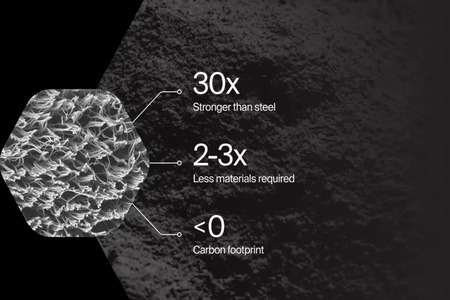
New report suggests that wool manufacturing is costing the earth
YarnsandFibers News Bureau 2021-11-30 11:47:42 – USAAccording to a new report released by the Center for Biological Diversity and Collective Fashion Justice's CIRCUMFAUNA campaign, wool manufacturing is a major contributor to biodiversity loss and climate change.
Shear Destruction: Wool, Fashion and the Biodiversity Crisis find that wool is not a natural fiber but a product of modern industrial, chemical, ecological, and genetic intervention that is anything but environmentally beneficial.
Stephanie Feldstein, population and sustainability director at the Center for Biological Diversity and co-author of the paper, said that the industry has been pulling the wool over our eyes for decades, claiming that wool is a sustainable fiber. Wool apparel comes at a high cost in terms of carbon emissions, land use, biodiversity loss, and pollution. There is nothing sustainable about wool.
The report finds that the average climate cost of sheep's wool is 3 times higher than acrylic and more than 5 times higher than conventionally grown cotton when compared to other materials used in similar types of garments. Wool consumes 367 times the amount of land per bale as cotton, and the chemically intense washing process for shorn wool kills aquatic life and pollutes streams.
Emma Hakansson, Collective Fashion Justice founding director and co-author of the report, said that sheep grazing pastureland may appear innocent and natural, yet sheep are brought, reared, and slaughtered while the grazed lands are damaged and prevented from growing. This inefficient, unsustainable, and exploitative industry has nothing natural about it.
Despite the pollution caused by slaughter, chemicals used in scouring, habitat loss, and greenhouse gas emissions linked with wool, the survey revealed that 87% of buyers believe it is "environmentally friendly." Only 28% of 50 prominent manufacturers using "sustainable" phrases to sell their wool products in an investigation by Collective Fashion Justice backed up the claim with any form of reference.
Joshua Katcher, founder of the CIRCUMFAUNA initiative and co-author of the report, said that there's a groundswell of truly sustainable and exciting circumfaunal material out there, but getting through the wool industry's well-funded narrative is no simple work. They need to have an open and honest conversation about wool's disproportionate influence on biodiversity loss and climate change, and they need to shift to plant-derived and high-tech new materials that are less harmful to native species and the environment.
The Center for Biological Diversity and Collective Fashion Justice are urging fashion industry associations, brands, and designers to commit to eliminating or drastically reducing wool use by 2025, to support material innovation and embrace alternatives that do not rely on fossil fuel-derived fibers (such as acrylic, polyester, and nylon), and to acknowledge the harms to biodiversity caused by wool in their sustainability language.
The Higg Material Sustainability Index (MSI), the Food and Agriculture Organization (FAO), Australian and US government agency records, industry sources, and scientific articles were used to compile the report's findings.
Market Intelligence
Ask for free sample Report

experience
Customer Base
dedicated team
Countries Served Worldwide









